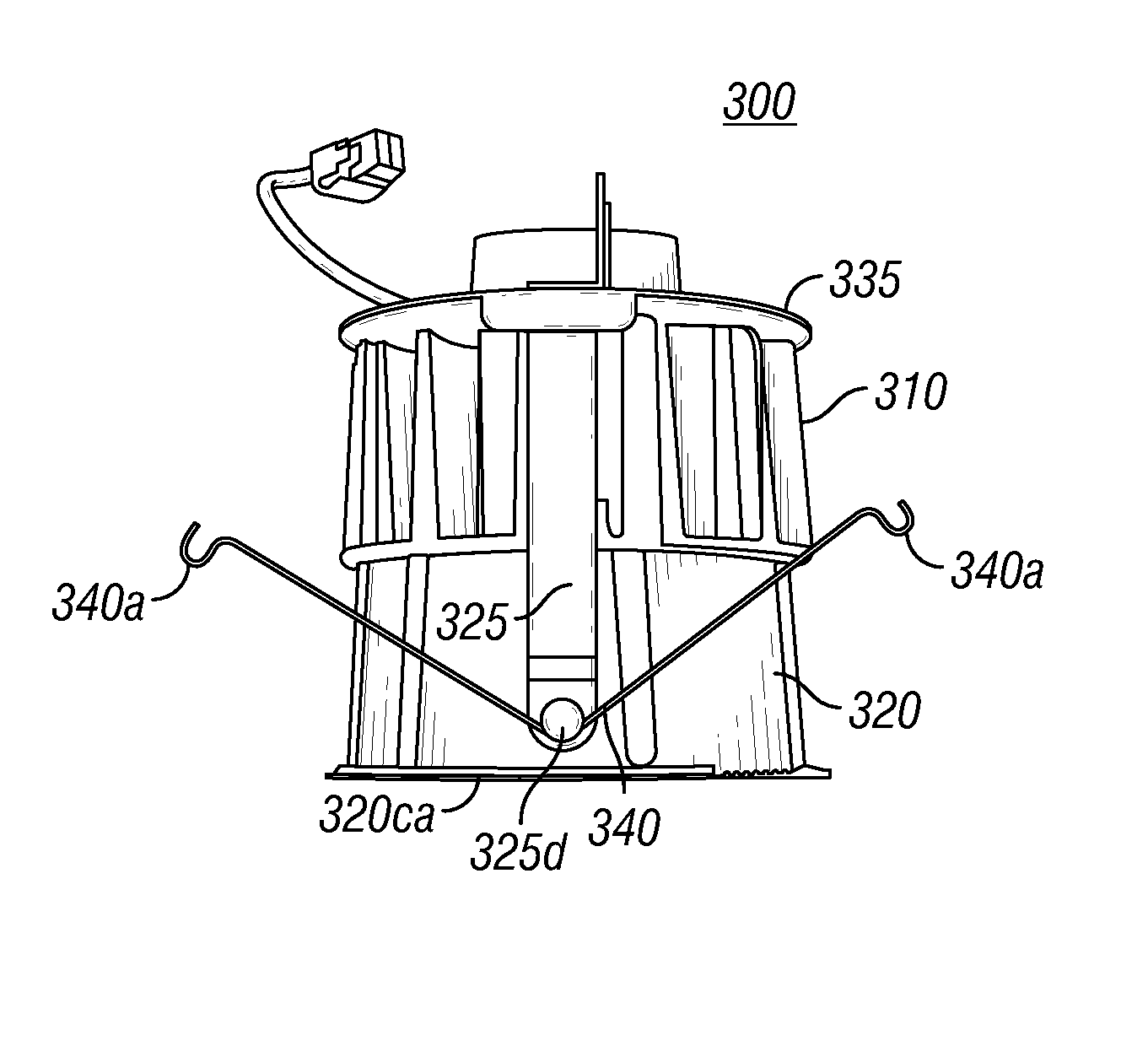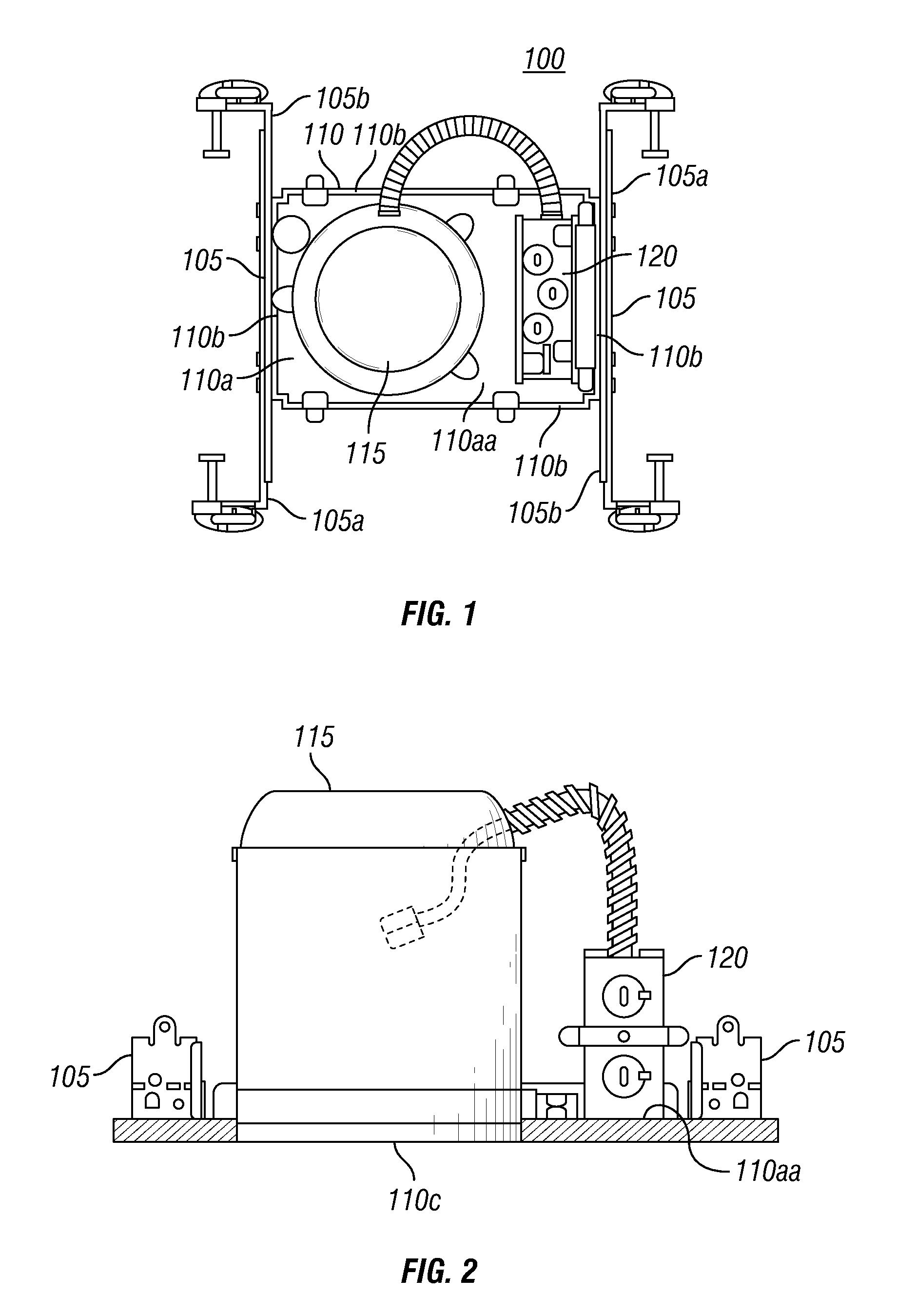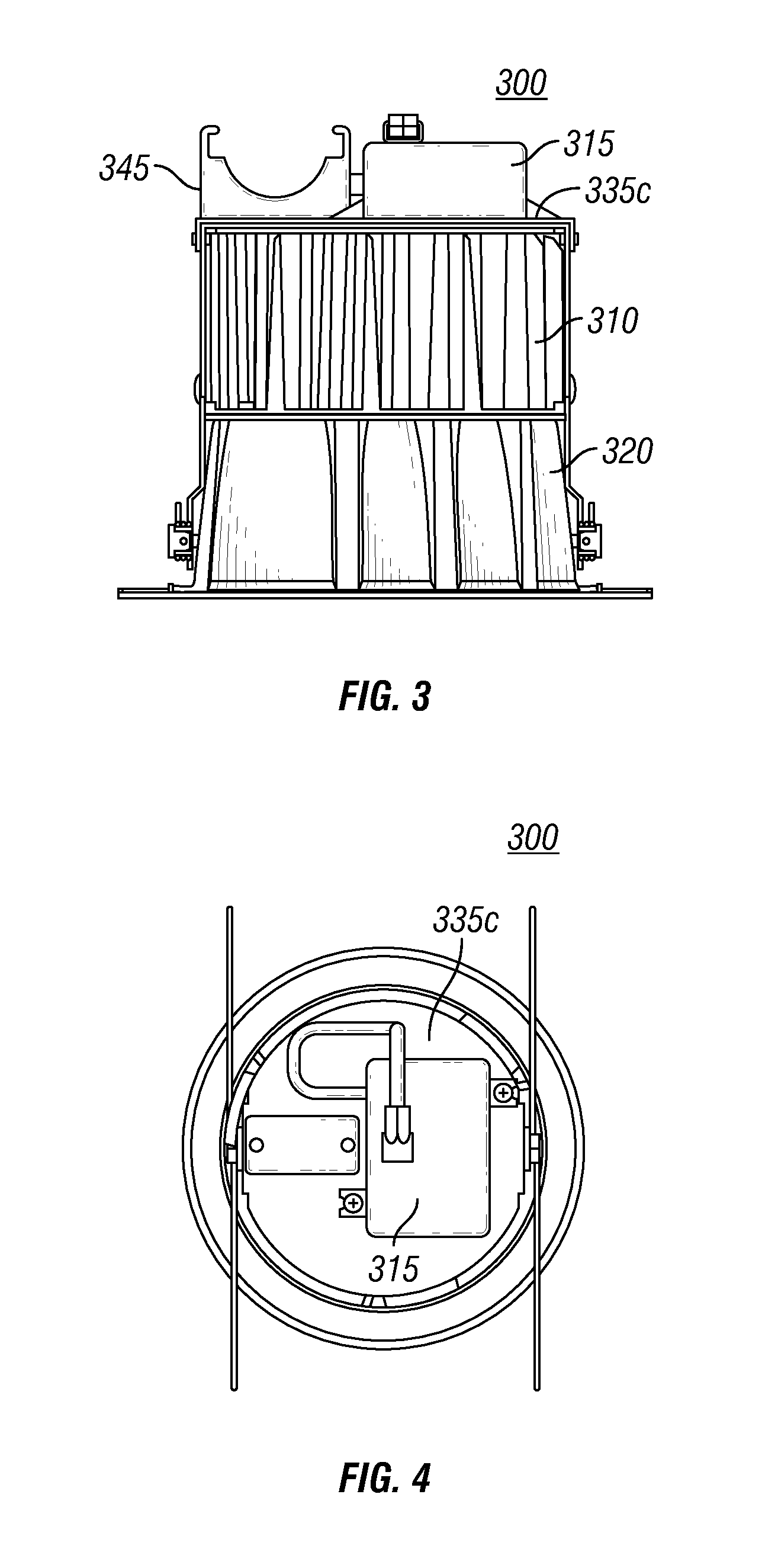Thermally protected light emitting diode module
a technology of light-emitting diodes and modules, which is applied in the direction of fixed installation, lighting and heating equipment, lighting support devices, etc., can solve the problems of complicated disposal of cfls, environmental concerns, and leds that cannot fit in existing incandescent lamp sockets, and achieve the effect of shortening the circui
- Summary
- Abstract
- Description
- Claims
- Application Information
AI Technical Summary
Benefits of technology
Problems solved by technology
Method used
Image
Examples
example
[0088]LED modules, as described with respect to FIGS. 21-22, having an automatic reset thermal switch positioned on the mounting bracket were tested to determine whether the LED modules can operate safely and effectively using various trims under varying conditions. The trim is the visible portion of the light fixture, and is the insert that is seen when looking up into the fixture, and also includes the thin lining around the edge of the light fixture. The thermal switches used in the tests are commercially available from Sensata Technologies, Inc. All of the tests utilized a thermal switch with a catalog number of 7AM023A5, with a thermal rating, or designated threshold temperature, of 80 degrees Celsius, except in test #2 in Table 1 below. In that test, a thermal switch having a catalog number of 7AM038A5, with a thermal rating of 155 degrees Celsius was used. LED modules having 25 watt (W) LEDs were supplied with a line voltage of about 120 volts (V). Some of the LED modules wer...
PUM
 Login to View More
Login to View More Abstract
Description
Claims
Application Information
 Login to View More
Login to View More - R&D
- Intellectual Property
- Life Sciences
- Materials
- Tech Scout
- Unparalleled Data Quality
- Higher Quality Content
- 60% Fewer Hallucinations
Browse by: Latest US Patents, China's latest patents, Technical Efficacy Thesaurus, Application Domain, Technology Topic, Popular Technical Reports.
© 2025 PatSnap. All rights reserved.Legal|Privacy policy|Modern Slavery Act Transparency Statement|Sitemap|About US| Contact US: help@patsnap.com



